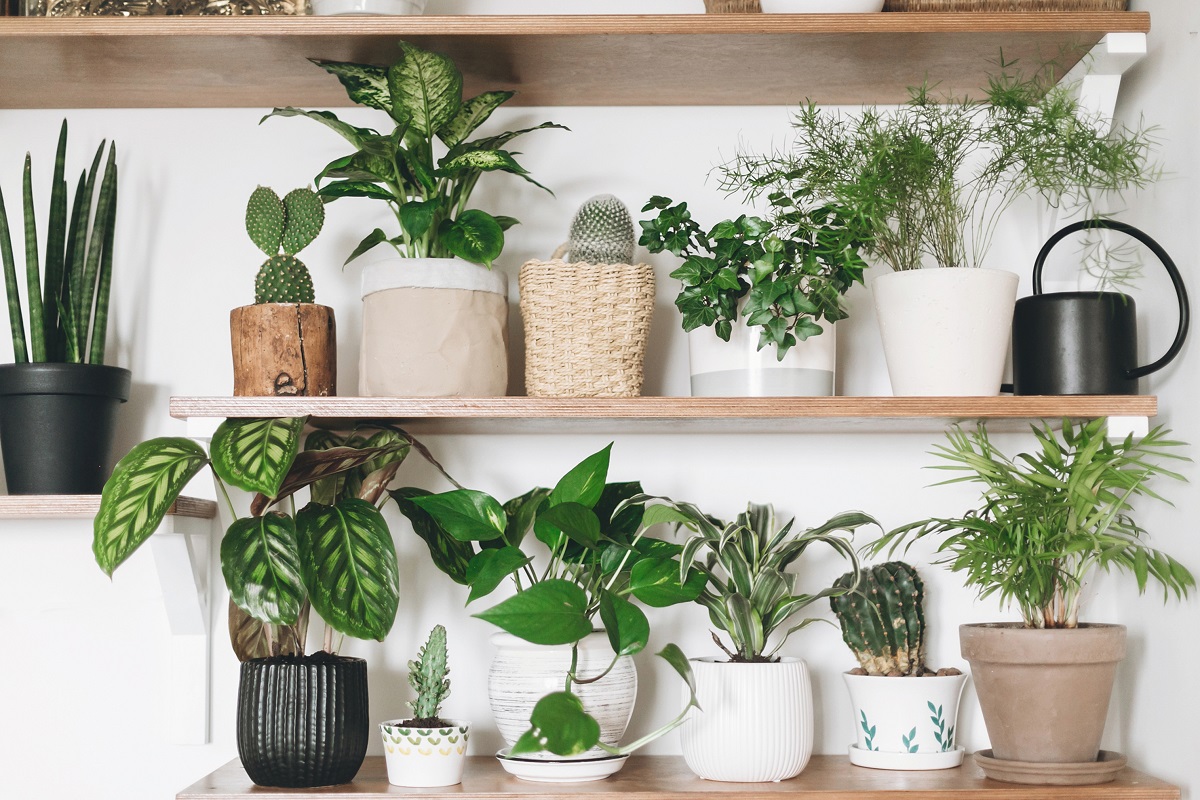As summer fades to autumn, you may be wanting to green up your indoor space – and you can start by repotting your houseplants to give them a boost before the cooler weather sets in.
Claire Bishop, houseplant buyer for Dobbies Garden Centres (dobbies.com), who is championing the #KeepBritainGrowing campaign by the Horticultural Trades Association, says all your indoor plants will need regular repotting.
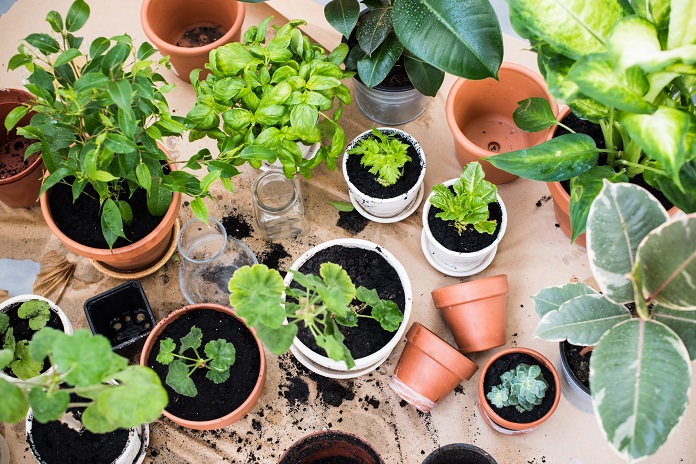
“Whether you have an air purifying sansevieria on your bedside table, or your own indoor jungle with plants trailing over shelves and bold leafy greens taking pride of place in every room, even the lowest maintenance plants require a repot – either annually or at least every two years – to keep them looking their best for years to come,” she explains.
Here she answers all our questions about repotting.
How do you know if your houseplant needs repotting?
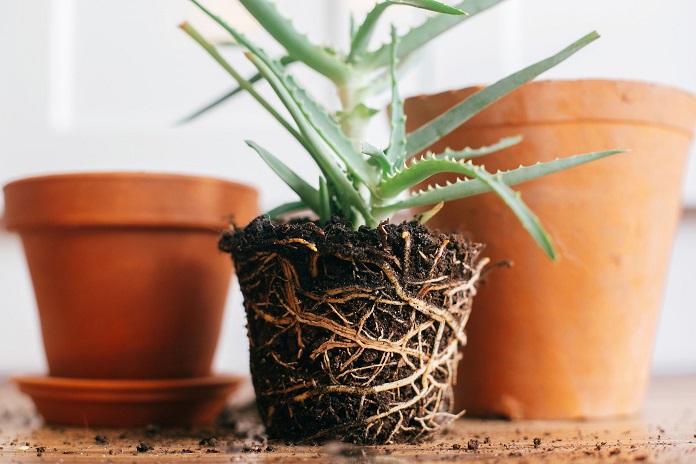
“If the plant simply looks like it is too big for its pot, it may be time,” Bishop explains. “As a general rule of thumb, it is best to gradually increase pot sizes, so doing this as an annual job will encourage steady growth.”
Other tell-tale signs are when the roots are growing out of the drainage holes, water is sitting on the top and not absorbing. Alternatively, if the soil is dried out or looks like it is disintegrating, or simply that it has been years since you repotted it.
However, a crowded root system doesn’t always mean your plant requires repotting. Some popular plants such as spider plants, snake plants and Swiss cheese plants, prefer to be pot-bound. Instead of checking the bottom of the pot for these plants, wait until you see some roots at the surface of the soil, or until the pot is rigid with roots. Spider plants will also start to put out babies for you to propagate when they are slightly pot bound.
How to repot a houseplant
Bishop offers the following step-by-step guide:
1. Remove plant from current pot
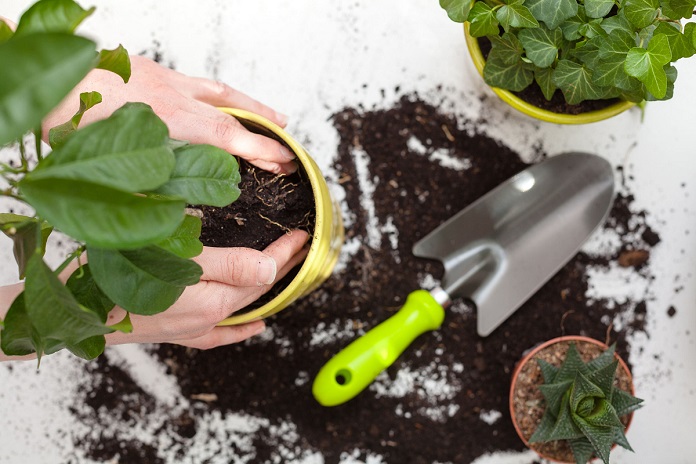
Turn your plant sideways, hold it gently by the stems or leaves and tap the bottom of its current pot until the plant slides out. You might need to give it a bit of help with a couple of gentle tugs on the base of the stems.
Tip: if you want to repot a cactus or other sharp plant, you can do so using thick gardening gloves or newspaper, or you can hold onto the cactus with a pair of tongs. Just be careful not to squeeze too hard!
2. Loosen the roots
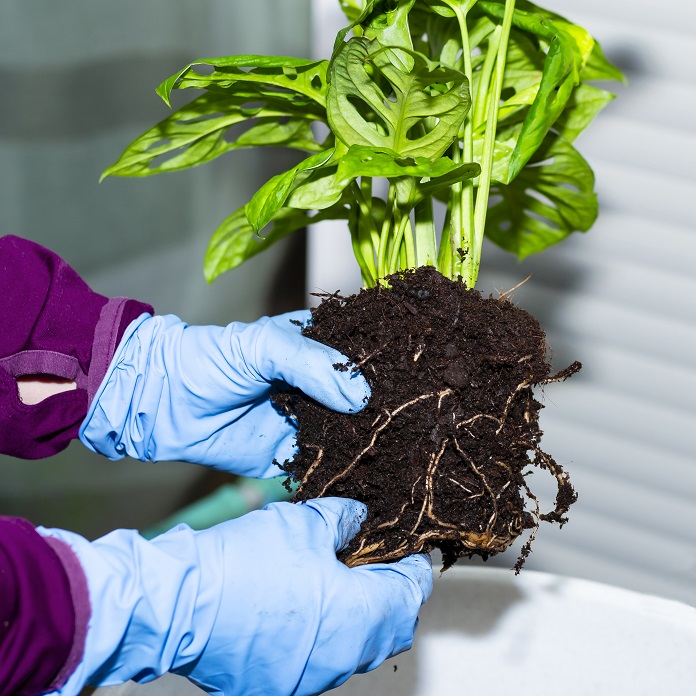
Loosen the plant’s roots gently with your hands. You can prune off any threadlike roots that are extra-long, just make sure to leave the thicker roots at the base of the foliage.
If your plant is root bound – the roots are growing in very tight circles around the base of the plant – unbind the roots as best you can and give them a trim. For plants that are rootbound, make sure the new container is roughly 2 to 4 inches bigger in diameter, so it has space for new root growth.
Now is also a great time to check for root rot or pests that may be affecting your plant’s health. Roots that have rotten will appear mushy and brown, and may have a very distinctive rotting smell. Simply remove any mushy roots and your plant will continue to put out new healthy roots.
If you have to remove all of the roots, propagate the plant either as a whole or divide it up and give some cuttings to friends and family.
3. Remove old potting mix
Remove about one third or more of the potting mix surrounding the plant. As it grew, your plant removed some of the nutrients in the current mix, so you will want to give it fresh mix if you are potting it anyway.
If you have problems with root pests or fungus gnats, it is advisable to change all of the soil. To combat these pests, sprinkle some diatomaceous earth on top of your soil after your repot. This is a natural substance that is not toxic to humans or pets and works by removing moisture from bugs, larvae and eggs in your soil.
You can buy Diatomaceous earth powder on Amazon.e
4. Add new potting mix
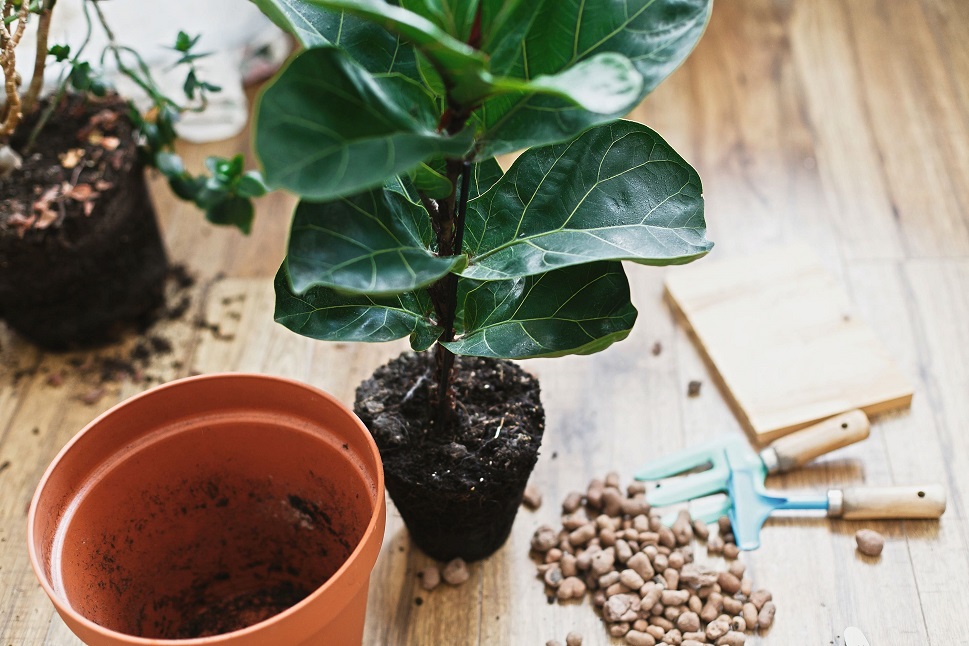
Pour a layer of fresh potting soil into the new planter and pack it down, removing any air pockets. If your new planter doesn’t have a drainage hole, layer the bottom grit or similar drainage material before adding the potting mix.
The goal is to create crevices for the extra water to pool into, away from your plant’s roots.
You may need specialist soil for your plants depending on their variety. For example, cacti and succulent soil should be very fast-draining and may contain sand and grit to aid drainage. Monstera and philodendron require something more woody and chunky, and calathea and maranta soil may contain more coco coir and perlite to retain a little more moisture in the soil.
Now is also the perfect time to add in a moss pole to your climbing plant that has started looking a bit straggly. Monsteras, pothos and ivy all love to climb, and will start producing larger, healthier leaves when supported.
5. Carefully replace the plant
Set the plant that you removed from the pot on top of the fresh layer of mix in the new planter, making sure it’s sitting in the centre, then add potting mix around the plant until it is secure.
Be sure not to pack too much soil into the planter, as you want the roots to be able to breathe.
6. Water and enjoy

Even out the potting soil on top, water well, and enjoy watching your houseplant grow and thrive in its roomier container.
Are all houseplants easy to repot?
“There aren’t any plants that are difficult to repot other than cacti but that’s mainly due to the spines, so wear thick gloves when repotting them,” Bishop advises.
Plants which are easy to repot include the peace lily (spathiphyllum), cheese plant (monstera), prayer plant (calathea) and snake plant (sansevieria).
How can I prevent transplant shock when I repot?
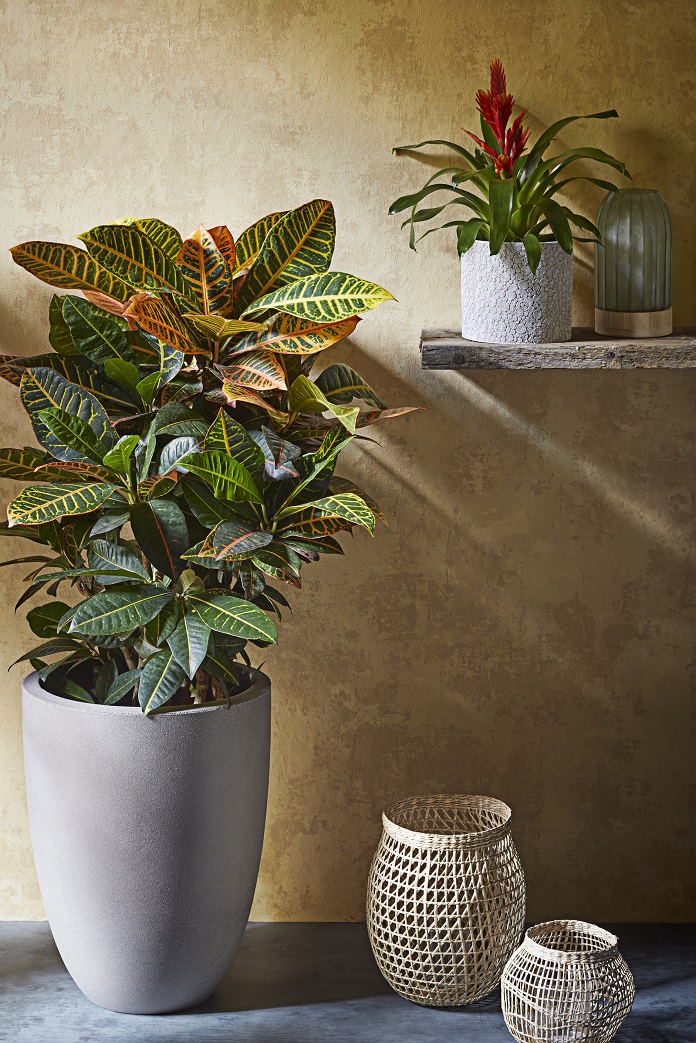
Plants can suffer from transplant shock after repotting which can kill the plant, but there are ways to deal with this, Bishop says.
Firstly, make sure the new pot has sufficient drainage holes, then place the plant in exactly the same spot it used to inhabit, so that it gets the same temperature and light conditions it had before.
Give the plant a dose of water-soluble, all-purpose plant food and nip off all dead leaves and stem ends to make room for new parts to grow.
One final tip – try to set aside a day to repot your houseplants in one go. That way you only have to get out soil mixes and make a mess once!
You might also be interested in…
This article may include affiliate links to products and services where we may receive a small fee to support the running of this site if you make a purchase or is a sponsored article from one of our select editorial partners providing valuable advice and information to our readers.























































